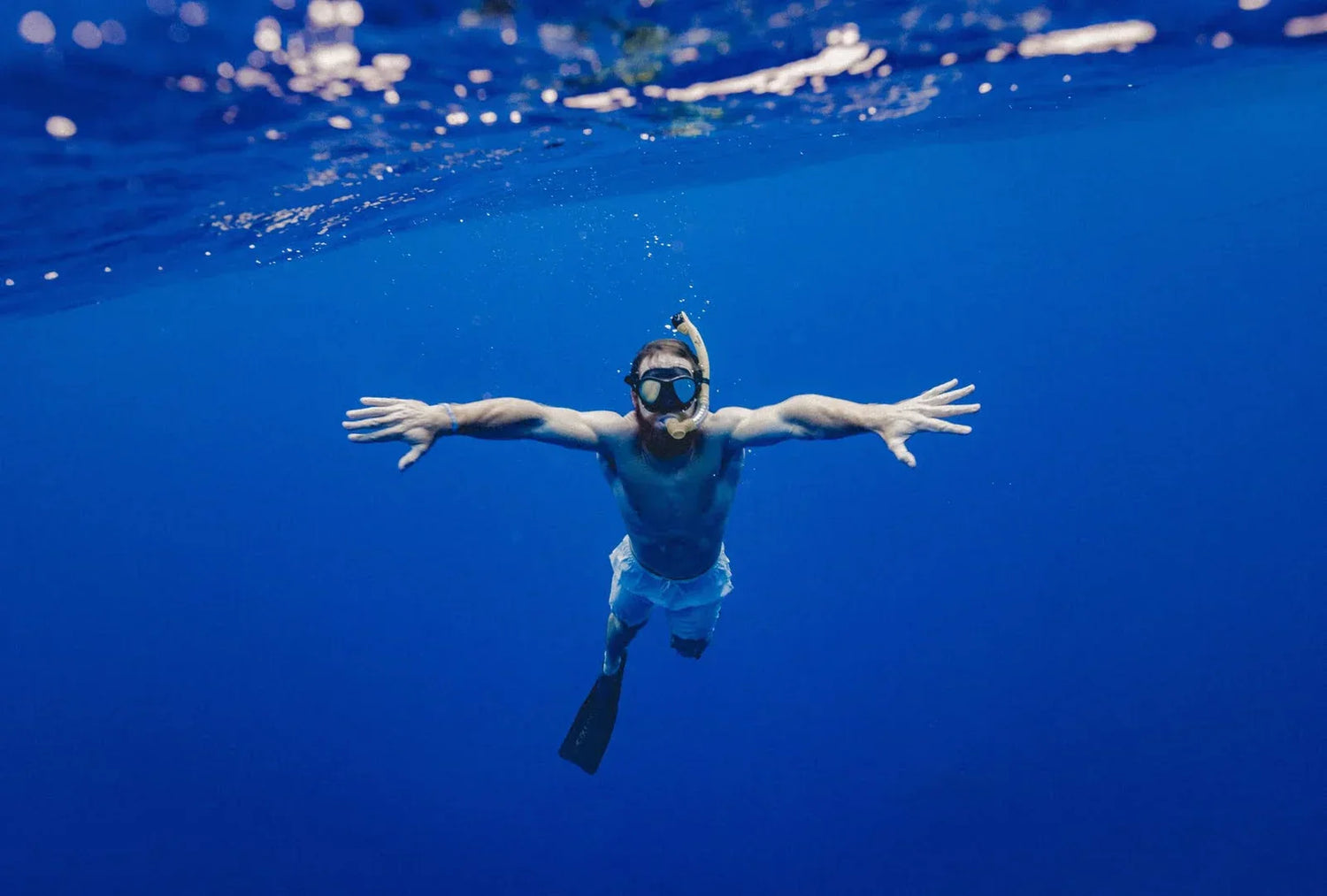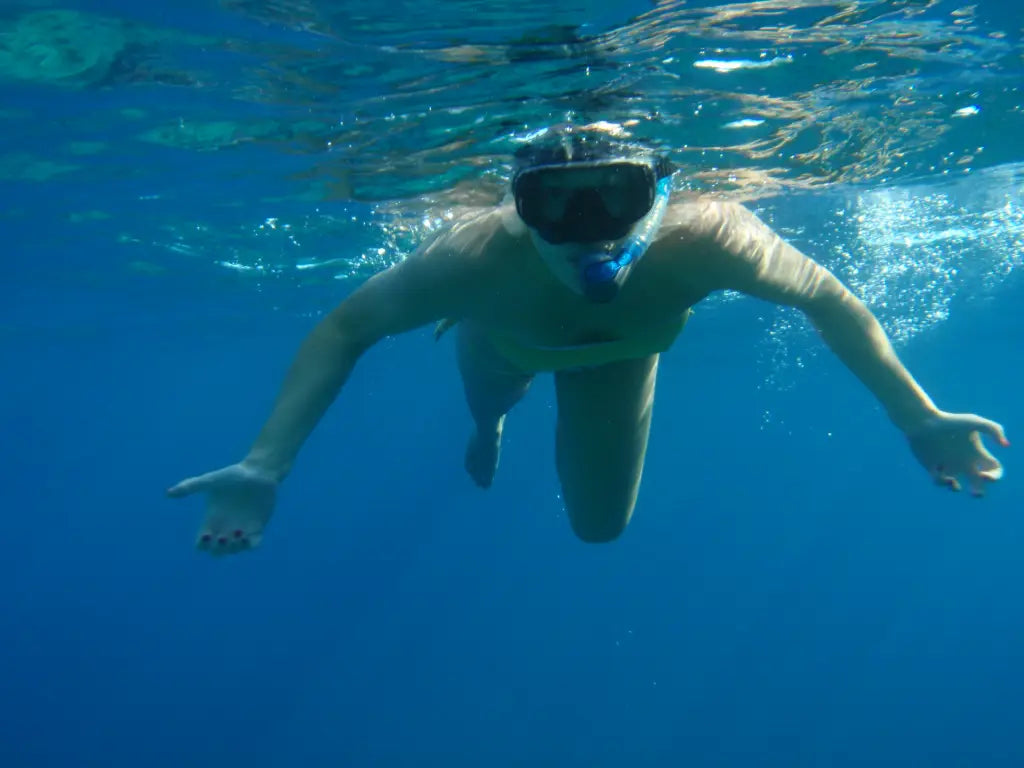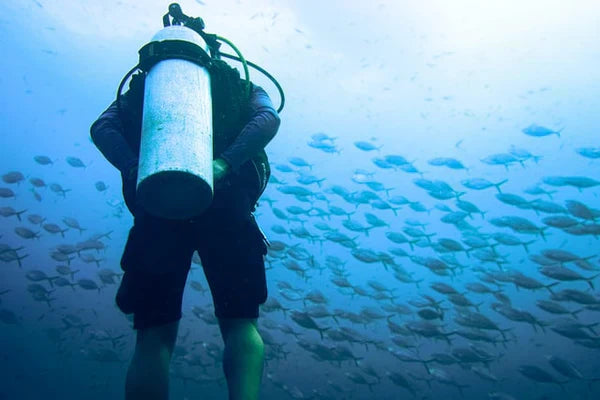When packing your snorkeling gear bag, prioritize these 5 essentials: a well-fitting mask (silicone skirts prevent leaks) for clear vision, a durable snorkel (preferably dry-top models to block water), adjustable fins (choose open-heel designs for comfort), a UV-protective rash guard (50+ UPF recommended), and a waterproof dry bag (10-20L capacity) to keep valuables safe. These items ensure comfort, safety, and hassle-free underwater exploration while fitting compactly in your gear bag.
Mask that fits well
Over 60% of first-time snorkelers struggle with mask leaks, often because they pick the wrong size or style. A well-fitting mask should seal comfortably without pressing too hard—test it by gently inhaling through your nose; if it stays suctioned for 3-5 seconds without straps, it fits. The best masks use silicone skirts (2-4mm thick) for flexibility and tempered glass lenses (3-5mm thick) for durability. Avoid cheap PVC skirts—they stiffen in cold water and crack after 6-12 months.
Single-lens designs (180° field of view) are popular, but dual-lens masks with adjustable nose pockets suit wider faces. If you wear glasses, prescription lenses (diopter inserts from -1.0 to -8.0) cost $20-50 extra.
For long hair, a neoprene strap cover ($5-10) prevents pulling. Pro tip: Anti-fog coatings last 10-15 dives before needing reapplication—baby shampoo (1 drop diluted in 30ml water) works as a cheap alternative.
Key Mask Specs to Check Before Buying
| Feature | Ideal Range | Why It Matters |
|---|---|---|
| Skirt material | 100% silicone | Softer seal, lasts 3-5 years |
| Lens type | Tempered glass | Resists cracks, clearer than plastic |
| Volume | 100-150ml | Easy clearing, good visibility |
| Strap system | Quick-adjust buckles | No fumbling underwater |
| Nose pocket | Flexible silicone | Prevents pressure points |
A mask should feel snug but not painful—if red marks last more than 10 minutes after removal, it’s too tight. For travel, foldable masks save 30% space but check the skirt for creases that might cause leaks. Prices range from 150 for premium options with optical lenses or UV-protective tints.
Final tip: Salt and sand degrade silicone 3x faster, cutting its lifespan from 5 years to just 2. Store it in a ventilated case (not airtight) to prevent mildew—a simple mesh bag works fine.
Snorkel with Dry Top
Standard J-tube snorkels let in water with every small wave, forcing you to clear it every 10-15 breaths. Dry-top snorkels solve this—their floating valve seals shut when submerged, blocking 95% of water entry. Tests show dry-top models reduce accidental swallowing by 80% compared to traditional designs.
The best dry-top snorkels use a lightweight buoyant valve (usually weighing 5-10g) that reacts in 0.3 seconds to block water. Cheaper versions with stiff valves fail 30% faster, often due to salt buildup or sand jamming the mechanism. Look for a purge valve at the bottom—this lets you blow out water with 50% less effort than forcing it back up the tube. A semi-dry snorkel (no top valve but a splash guard) is a budget option, but still lets in 40% more water in choppy conditions.
A 18-22mm wide tube balances airflow (reducing breathing resistance by 15%) without being bulky. Overly wide tubes (25mm+) increase drag, while narrow ones (under 16mm) make breathing feel like sipping through a straw. The optimal length is 12-14 inches—shorter tubes risk mouthpiece submersion, while longer ones trap stale air.
Rinse the valve with fresh water after each use—salt crystals can jam it within 10 dives. Store it out of direct sunlight (UV degrades silicone 2x faster). For travel, detachable snorkels save space, but reassemble carefully—misaligned valves cause 25% of leaks.
Pro tip: If you snorkel frequently (10+ times a year), invest in a semi-rigid tube. They last 3-5 years versus 1-2 years for fully flexible ones. Pair it with anti-fog drops ($5 per bottle, lasts 20 uses) for clear breathing without constant clearing. With the right dry-top snorkel, you’ll spend 90% of your time watching fish—not fighting your gear.

Comfy Adjustable Fins
Over 40% of snorkelers abandon their first pair within a year due to discomfort, often because they prioritized looks over fit. The right adjustable fins should feel snug but not restrictive, delivering 25-30% more propulsion per kick compared to rigid, ill-fitting designs.
Open-heel fins with adjustable straps outperform full-foot versions for three reasons: they accommodate neoprene booties (3-5mm thick) for warmth, adjust to foot sizes spanning 2-3 shoe sizes, and prevent ankle strain during 60+ minute sessions. Tests show bungee-style straps reduce pressure points by 50% compared to traditional buckle systems. Look for blades with 15-20° of flex—stiffer fins exhaust beginners 40% faster, while overly flexible ones waste energy in strong currents.
Shorter fins (under 20 inches) work best in tight spaces like coral reefs, while longer blades (22-26 inches) provide 15% more speed in open water. The sweet spot for most snorkelers is 21-23 inches, balancing maneuverability and power. Vented blades (with 4-6 small holes near the foot pocket) reduce leg fatigue by 20% by releasing water resistance on the upkick.
Pro tip: \ A 3mm neoprene sock adds 0.5 shoe sizes—what fits barefoot will crush your toes when layered. Rinse fins after each use; salt buildup in adjustment tracks wears out straps 3x faster. Store them flat; hanging by straps warps the blade over months.
Pair them with fins sized 1-2 numbers larger than your street shoes. In warm destinations, lycra socks ($8-12) prevent chafing without overheating. With the right fins, you'll glide effortlessly—and your legs will thank you later.
Sun Protection Shirt
UV radiation near water reflects 25% more intensely, meaning you burn nearly twice as fast compared to being on dry land. A quality sun shirt blocks 98% of UVA/UVB rays while letting your skin breathe—something sunscreen can't match after 40 minutes in the water.
UPF 50+ fabric is the gold standard, blocking 99.9% of UV rays while remaining lightweight (typically 150-200gsm). Cheaper UPF 30 shirts let through 3x more radiation—enough to cause redness after 2 hours in tropical sun. The best materials blend 88% nylon with 12% spandex, offering 4-way stretch that moves with your body without riding up.
A semi-fitted cut (5-7% stretch) stays in place better than baggy designs that float up in water. Raglan sleeves prevent underarm chafing during 3+ hour sessions, while flatlock stitching eliminates seams that rub saltwater rashes. For hot climates, mesh panels under arms and across the back increase airflow by 30% without sacrificing protection.
How Different Sun Shirt Features Perform
| Feature | Budget Option | Premium Choice | Real-World Difference |
|---|---|---|---|
| UPF Rating | 30 (blocks 96.7%) | 50+ (blocks 99.9%) | Premium prevents 3x less burn |
| Fabric Weight | 220gsm (hotter) | 160gsm (cooler) | Lighter = 20% less fatigue |
| Seam Type | Overlock (bulky) | Flatlock (smooth) | No chafing after 4+ hours |
| Chlorine Resistance | 50 washes | 200+ washes | Premium lasts 4x longer |
| Quick-Dry Time | 25 minutes | 8 minutes | Dries 3x faster between dips |
Dark navy shirts absorb 85% of visible light, making them 5-8°F hotter than light colors in direct sun. However, bright whites and yellows degrade faster—losing 50% UPF after 60 washes versus 20% for darker hues. For best balance, choose heather gray or light blue, which reflect heat while maintaining durability.
Wash sun shirts in cold water with UV-protectant detergent (like Sun Guard)—it replenishes coatings, adding 30-50 extra washes of full protection. Avoid fabric softeners; they clog pores in the fabric, reducing breathability by 40%. Hang dry instead of machine drying to prevent fiber breakdown that cuts UPF effectiveness in half.
Pro tip: For snorkeling, choose shirts with a 1-2 inch longer back hem—it stays tucked into swim trunks when bending forward. Integrated thumb loops keep sleeves positioned during arm movements, and a 6-inch zippered chest pocket safely holds resort cards or dive notes. At 80, a good sun shirt pays for itself in saved sunscreen costs after just 8-10 uses.
Waterproof Bag for Stuff
Standard "water-resistant" bags fail 60% of the time in real snorkeling conditions, letting in moisture through zippers, seams, or faulty closures. A true waterproof bag keeps contents dry even when fully submerged for 30+ minutes at depths up to 10 feet, thanks to TPU-laminated fabric (0.5mm thick) and welded seams instead of stitching.
For half-day excursions, 8-12 liters fits a towel, phone, snacks, and sunscreen. Full-day trips require 15-20 liters to add extra clothes and a compact camera. Oversized bags (25L+) become unwieldy when only half-full—their extra material increases drag by 40% when swimming. The sweet spot is a 10L roll-top bag, which compresses to 5L when underpacked but expands to 15L for bulky items like reef shoes.
Traditional zippers leak 90% of the time after 6 months of saltwater exposure. Dual-layer roll-top closures (with 3+ rolls) maintain a perfect seal even when tossed by waves. For quick access, submersible zippers (like AquaGuard®) cost 30% more but last 5x longer than standard options. Avoid magnetic closures—they fail 100% of the time when sand gets lodged in the mechanism.





Leave a comment
All comments are moderated before being published.
Este site está protegido pela Política de privacidade da hCaptcha e da hCaptcha e aplicam-se os Termos de serviço das mesmas.